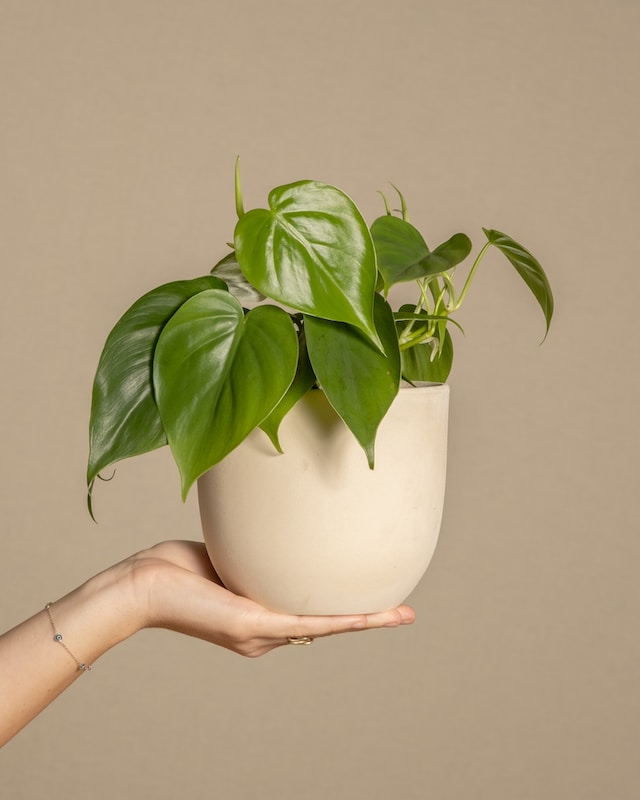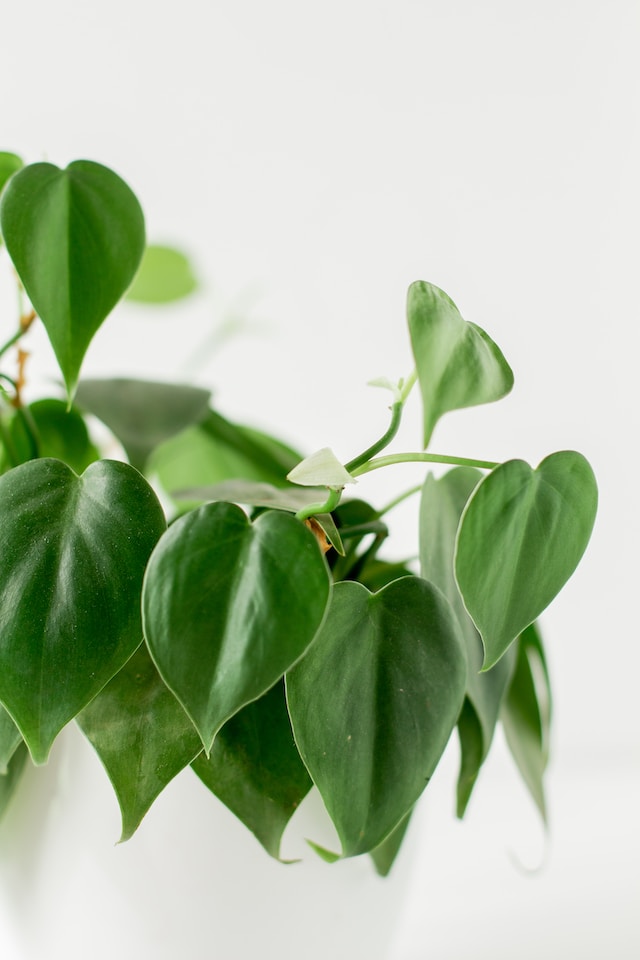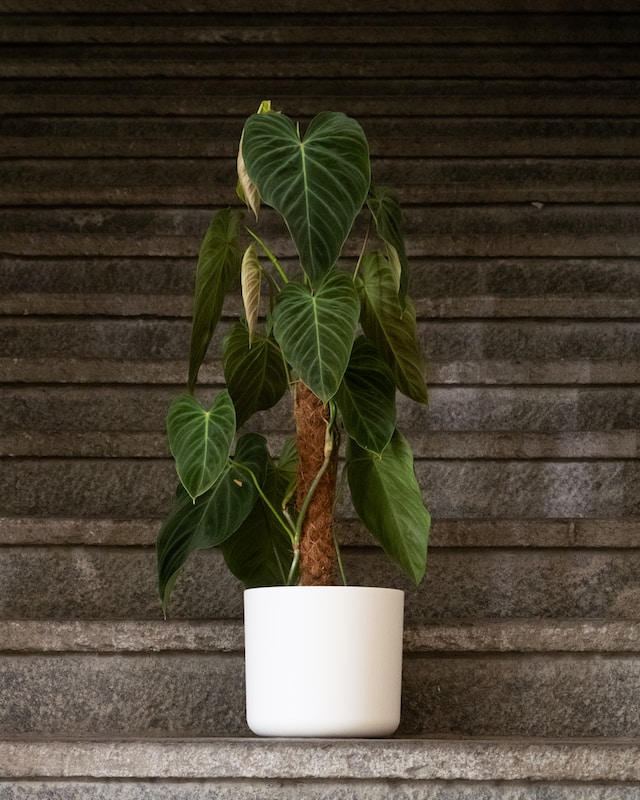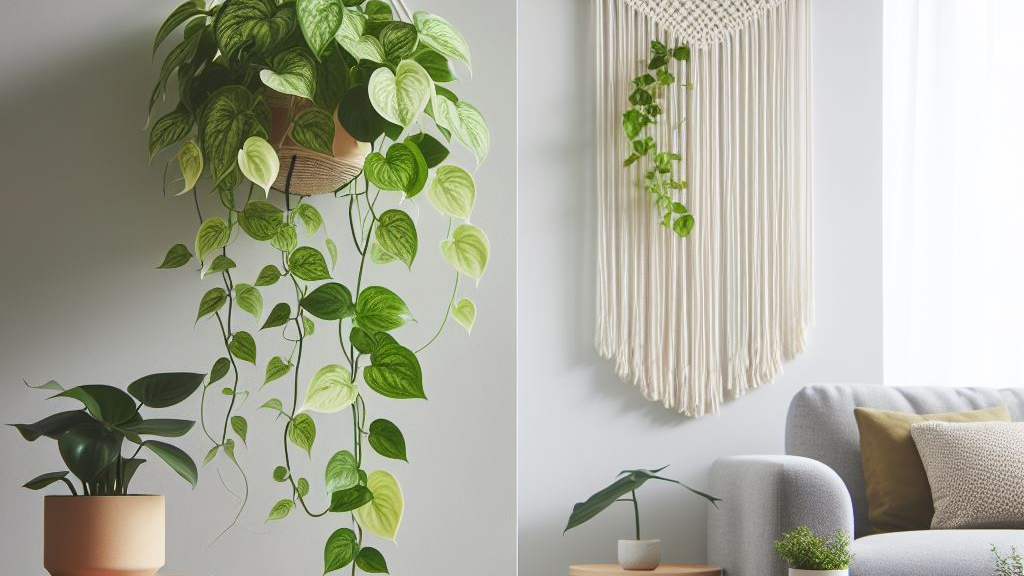Last updated on April 21st, 2024 at 07:12 am
Regarding indoor plants, Pothos and Philodendrons are often confused due to their similar appearance. However, the primary difference between Pothos and Philodendron lies in their distinct characteristics, such as leaf shape, growth pattern, and care requirements, setting them distinctly apart from one another.
Pothos and Philodendron are highly popular indoor plants, yet distinguishing between them can be quite tricky.
Their resemblance and shared preferences for living conditions often lead to confusion. However, they are distinct plant types with unique features and specific needs.
Understanding the difference between Pothos and Philodendron involves recognizing what makes each plant special and what conditions foster their healthy growth.
Contents
- 1 Differences Between Pothos and Philodendrons
- 1.1 Differences Between Pothos and Philodendrons Taxonomy
- 1.2 Leaf Texture And Shape
- 1.3 New Leaves And Growth Habits
- 1.4 Difference Between Pothos and Philodendron Light Requirements
- 1.5 Root-like extensions and Leaf Stems
- 1.6 Growing Difference Between Pothos and Philodendron
- 1.7 Difference Between Pothos And Philodendrons Regarding Toxicity
- 1.8 Air Purification and Benefits
- 2 FAQS
- 2.1 What’s the primary difference between Pothos and Philodendron?
- 2.2 Are Pothos and Philodendron toxic to pets or humans?
- 2.3 How do Pothos and Philodendron contribute to air quality?
- 2.4 How can I tell Pothos and Philodendron apart?
- 2.5 What are the care requirements for Pothos and Philodendron?
- 2.6 Do Pothos and Philodendron belong to the same family?
- 2.7 What are the light requirements for Pothos and Philodendron?
- 3 Author
Differences Between Pothos and Philodendrons
When exploring the world of indoor greenery, differences between Pothos, known as devil’s ivy, and various vining types of philodendron become essential.
These plants might look similar, but there are key things that can help tell them apart. From their names in science to the shapes of their leaves, how they grow, the roots they have, and the conditions they like, there are lots of little details that make Pothos and Philodendrons unique indoor plants.
Differences Between Pothos and Philodendrons Taxonomy

Taxonomy, which is like a plant’s scientific family tree, helps us understand where Pothos and Philodendron belong.
Pothos belongs to the Epipremnum genus, known scientifically as Epipremnum aureum. On the other hand, Philodendron is part of the Philodendron genus, and there are various species within this group, such as Philodendron hederaceum and Philodendron scandens.
Despite their taxonomic distinction, both Pothos and Philodendron share similarities owing to their membership in the Araceae family. However, their genus-level classification sets them apart, contributing to differences in specific features and growth habits observed between the two plants, highlighting the unique difference between Pothos and Philodendron.
Leaf Texture And Shape

The leaf textures and shapes of Pothos and Philodendron help in distinguishing between these two plants.
Pothos leaves typically showcase a smooth, waxy texture and come in heart-shaped designs, often variegated with shades of green, yellow, or white. Conversely, Philodendron leaves exhibit more diversity; they can be heart-shaped, elongated, or split, and commonly possess a glossy or velvety texture.
This dissimilarity in leaf characteristics is a significant factor contributing to the difference between Pothos and Philodendron, aiding enthusiasts in identifying and appreciating the distinct features of each plant.
New Leaves And Growth Habits
Observing the emergence of new leaves and growth habits offers insight into differentiating Pothos from Philodendron.
Pothos tend to produce new leaves that unfurl as tightly coiled structures, gradually opening up to reveal their vibrant colors. Its growth habits involve trailing or cascading vines, making it an excellent choice for hanging planters or climbing surfaces.
In contrast, Philodendron often showcases new leaves that unfurl gradually and display a wide range of shapes and sizes, adapting to various light conditions. Its growth tendencies include upright growth patterns or climbing behaviors, ideal for trellises or support structures.
Understanding these dissimilarities in the development of new leaves and growth habits unveils another layer of the difference between Pothos and Philodendron, shaping their unique appearances and adaptability to diverse indoor environments.
Difference Between Pothos and Philodendron Light Requirements

Both Pothos and Philodendron are adaptable plants when it comes to light, but there are subtle differences in their preferences.
Pothos thrives in moderate to low light conditions. While it can tolerate low-light environments, it grows best in bright, indirect light. Too much direct sunlight may scorch its leaves.
Philodendron is similarly adaptable but tends to prefer slightly brighter conditions compared to Pothos. It can thrive in moderate to bright, indirect light. However, too much direct sunlight can cause its leaves to yellow or burn.
Understanding the difference between pothos and philodendron light preferences is essential for maintaining the health and appearance of both plants. Proper light conditions play a vital role in their growth and can help enthusiasts provide the ideal environment for their Pothos or Philodendrons to flourish.
Root-like extensions and Leaf Stems
Examining the distinctive features of root-like extensions and leaf stems sheds light on the difference between Pothos and Philodendron.
Pothos showcases its climbing ability through prominent root-like extensions along its stems, aiding in attachment and support. Conversely, Philodendron exhibits diverse petioles—the slender stalks linking the leaf blade to the main stem—which can vary in length and thickness across different varieties.
This distinction in the characteristics and functions of root-like extensions and leaf stems adds to the distinction between Pothos and Philodendrons, contributing to their individual growth patterns and survival strategies in various habitats.
Growing Difference Between Pothos and Philodendron
Let’s look at how Pothos and Philodendron grow, showing what makes each unique.
Pothos usually hangs or climbs, doing well in places with not too much light. It likes to spread out its vines and looks great in hanging pots or climbing up things. Meanwhile, Philodendron grows in different ways – sometimes standing up straight or climbing. It can handle various light conditions, from medium to bright indirect light.
Understanding these differences in how they grow shows us what makes Pothos and Philodendrons special and why they thrive in different settings, highlighting the difference between Pothos and philodendrons.
Difference Between Pothos And Philodendrons Regarding Toxicity
Pothos is considered mildly toxic if ingested by pets or humans. It contains insoluble calcium oxalate crystals. In cases of ingestion, it may cause irritation or discomfort in the mouth, leading to symptoms such as oral irritation, drooling, vomiting, or difficulty swallowing.
Philodendrons also contain calcium oxalate crystals, much like Pothos, and can irritate if chewed or ingested by pets or humans. Ingesting Philodendron may result in mouth, tongue, and throat irritation, leading to symptoms like oral burning and swelling.
The difference between Pothos and Philodendron regarding toxicity lies in their levels of impact when ingested. While both contain similar oxalate crystals causing mouth irritation, Philodendron might lead to more severe discomfort compared to the relatively milder effects of Pothos ingestion.
Air Purification and Benefits
Both Pothos and Philodendron are known for their air-purifying properties, helping to remove toxins from indoor spaces and enhance air quality.
While Pothos and Philodendron share similarities and are both beautiful additions to any indoor space, understanding their differences in appearance, care needs, and potential risks is essential for ensuring their proper growth and maintenance.
Remember, whether it’s the cascading elegance of Pothos or the diverse leaf shapes of Philodendron, both plants offer unique qualities that can brighten up your living space with a touch of natural beauty.
In conclusion, the key takeaway is that while they might look alike at first glance, a closer examination reveals the distinct characteristics that make Pothos and Philodendron stand out in their own charming ways.
FAQS
What’s the primary difference between Pothos and Philodendron?
The main difference between pothos and philodendrons lies in their distinct characteristics such as leaf shape, growth patterns, and care requirements. Pothos typically have heart-shaped leaves and trails or climbs, whereas Philodendron exhibits various leaf shapes and grows upright or climbs.
Are Pothos and Philodendron toxic to pets or humans?
Yes, both Pothos and Philodendron contain calcium oxalate crystals, making them mildly toxic if ingested by pets or humans. Ingestion may cause mouth irritation, drooling, vomiting, or difficulty swallowing.
How do Pothos and Philodendron contribute to air quality?
Both Pothos and Philodendron are known for their air-purifying properties, helping to remove toxins from indoor spaces and improving air quality.
How can I tell Pothos and Philodendron apart?
Look for differences in leaf texture and shape, growth habits, root-like extensions, and leaf stems. Pothos usually has heart-shaped leaves and shows tight coiled new growth, while Philodendron leaves vary more in shape and texture.
What are the care requirements for Pothos and Philodendron?
Both plants prefer bright, indirect light, and well-draining soil kept slightly moist but not waterlogged. They thrive in moderate room temperatures and are considered low-maintenance indoor plants.
Do Pothos and Philodendron belong to the same family?
While both belong to the Araceae family, they are from different genera. Pothos is part of the Epipremnum genus, while Philodendron belongs to the Philodendron genus.
What are the light requirements for Pothos and Philodendron?
Pothos thrives in moderate to low light, while Philodendron prefers moderate to bright, indirect light. Direct sunlight can harm both plants, causing leaf damage or yellowing.
While Pothos and Philodendrons may appear similar at first glance, their distinct characteristics set them apart as unique and captivating indoor plants.
The primary differences lie in their leaf shapes, growth patterns, and care requirements. Pothos typically exhibit heart-shaped leaves and a trailing or climbing growth habit, whereas Philodendron presents diverse leaf shapes and can grow upright or climb.
Understanding their taxonomy, leaf textures, growth habits, root extensions, and toxicity levels helps enthusiasts differentiate between these beloved plants. Despite their similarities, their genus classifications, distinct leaf textures, new growth behaviors, and root structures highlight the fascinating differences between Pothos and Philodendron.
Both plants offer air-purifying benefits and aesthetic appeal to indoor spaces. However, their individual characteristics, care needs, and toxicity levels necessitate proper identification and understanding for their optimal growth and maintenance.
Ultimately, whether it’s the cascading elegance of Pothos or the diverse leaf shapes of Philodendron, these indoor plants bring nature’s beauty into homes while requiring specific care suited to their unique traits. Appreciating and recognizing their differences allows plant enthusiasts to cultivate and enjoy these green companions to the fullest.

